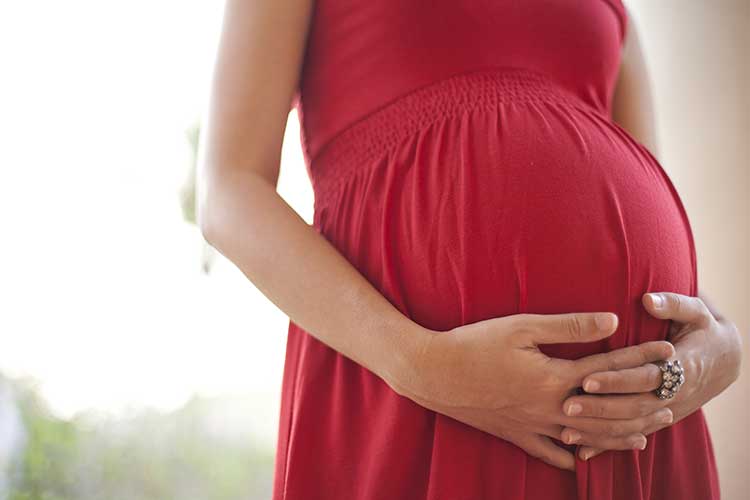Maternal collapse is a rare, life-threatening event with a wide range of possible causes that may or may not be pregnancy-related.
Defined as an acute event resulting in a reduced or absent consciousness and potential cardiac arrest, maternal collapse can occur at any stage of pregnancy and up to six weeks postnatally (Chu et al. 2019).
With both parent and baby at risk of potentially life-threatening repercussions, prompt recognition and treatment are vital for effective management.
In acute collapse scenarios, the wellbeing of the birthing parent should always take priority, and only once their condition has been stabilised should action be taken to support the wellbeing of the baby (Brunskill & Ferriman 2018).
Fortunately, maternal collapse is rare in Australia, occurring in about 1 out of every 20-30,000 pregnancies (SA Health 2020), and is an emergency that few midwives will see during their careers.
The outcomes for both parent and baby are dependent on swift action and effective resuscitation, yet the early warning signs of impending maternal collapse may be absent or difficult to recognise (Chu et al. 2019).
Evaluating the Risk
As Hingston (2017) notes, maternal collapse can occur any time during pregnancy and up to 42 days following delivery, however, not all maternal deaths are preceded by an identifiable collapse, and not all maternal collapses result in death.
Even though it's not always possible to predict which patients will be in the greatest danger of collapse, some of the most common risk factors can be identified and include:
- Maternal age of 35 years or older
- Obesity
- Lower socioeconomic status
- Pre-existing mental health issues, substance use or domestic violence
- Medical co-morbidities, especially asthma, autoimmune diseases or inflammatory disorders.
(Hingston 2017)

Causes of Maternal Collapse
Causes of maternal collapse can be categorised according to the ‘five Hs’:
- Head: Eclampsia, epilepsy, cerebrovascular accident, vasovagal response
- Heart: Myocardial infarction, arrhythmias, congenital heart disease, peripartum cardiomyopathy, dissection of thoracic aorta
- Hypoxia: Asthma, pulmonary embolism, pulmonary oedema, anaphylaxis
- Haemorrhage: Abruption, uterine atony, genital tract trauma, uterine rupture, uterine inversion, ruptured aneurysm
- Whole body and Hazards: Hypoglycaemia, amniotic fluid embolism, septicaemia, trauma, complications of anaesthesia, drug toxicity.
(SA Health 2020)
Emergency Management of Maternal Collapse
In addition to standard resuscitation procedures, some additional factors need to be considered for pregnant patients, such as placing them in the left lateral position and administering oxygen while all vital signs are being recorded. Fetal wellbeing should also be assessed, but only after the parent's condition has been assessed and, if possible, stabilised (Chu et al. 2019).
There are many physiological changes that occur in pregnancy that could potentially make resuscitation more difficult. For example:
- The weight of a large gravid uterus can cause aortocaval compression if the patient is lying flat on their back, resulting in reduced cardiac output.
- Depending on the gestation, pressure from the uterus can splint the diaphragm. This might mean increased pressure is needed for successful ventilation.
- Increased breast tissue can reduce chest wall compliance and potentially make ventilation more difficult.
- Fetal haemoglobin circulating in the fetus and placenta has a higher affinity for oxygen than adult haemoglobin, which allows the fetus to 'steal' oxygen from the parent. This means that oxygen delivery to the maternal brain and myocardium is less efficient than in the non-pregnant patient.
- The increased plasma volume of pregnancy is linked to dilutional anaemia and can result in reduced oxygen-carrying capacity.
- Changes in respiratory and metabolic function make acidosis more likely to develop, which means that resuscitation needs to be even more efficient than usual.
(Chu et al. 2019)
Brunskill and Ferriman (2018) suggest the following key steps that should always be performed in cases of maternal collapse:
- Identify any antenatal risk factors
- Manage patients with pre-existing disease in a specialist clinic as part of an interprofessional approach
- Document a management plan for delivery and the postnatal period for high-risk patients
- Ensure adequate monitoring of high-risk patients
- Involve senior clinicians early
- Ensure all staff are trained in resuscitation techniques for pregnant patients.
Chu et al. (2019) expand on this and emphasise the importance of maintaining left-lateral displacement of the uterus to reduce the degree of aortocaval compression. This should be achieved manually, with one member of the maternity team using a hand to push the uterus to the side while the patient is supine. Ultimately, it may be necessary to consider expediting delivery with an emergency caesarean section to give both parent and baby the best possible chance of survival (SA Health 2020).
Conclusion

With such potentially devastating outcomes, patients who are in a high-risk category for maternal collapse should be referred to appropriate specialists who can create a specific pregnancy management plan that highlights any 'red-flag' symptoms that might require an urgent referral or specialist review (Chu et al. 2019).
Hingston (2017) sums up the situation succinctly by suggesting that, as with everything in obstetrics, one of the biggest challenges with maternal collapse is the unpredictability and the need for constant vigilance, however rare these events might be.
Test Your Knowledge
Question 1 of 3
What are the ‘five Hs’ in the context of maternal collapse causes?
Topics
References
- Brunskill, P & Ferriman, E 2018, ‘Maternal Collapse in Pregnancy’, Medicolegal Issues in Obstetrics and Gynaecology, pp.185-190, viewed 16 December 2024, https://link.springer.com/chapter/10.1007%2F978-3-319-78683-4_33
- Chu, J, Johnston, T & Geoghegan, J 2019, ‘Maternal Collapse in Pregnancy and the Puerperium’, BJOG: An International Journal of Obstetrics & Gynaecology, vol. 127, no. 5, viewed 16 December 2024, https://obgyn.onlinelibrary.wiley.com/doi/full/10.1111/1471-0528.15995
- Hingston, T, 2017, ’Maternal Collapse’, O&G Magazine, vol. 19, no. 2, viewed 16 December 2024, https://www.ogmagazine.org.au/19/2-19/maternal-collapse/
- SA Health 2020, South Australian Perinatal Practice Guideline: Collapse (Maternal), Government of South Australia, viewed 16 December 2024, https://www.sahealth.sa.gov.au/wps/wcm/connect/32d2e4804ee4fc8297449fd150ce4f37/Maternal-collapse-WCHN-PPG-20092011.pdf?MOD=AJPERES
 New
New 
